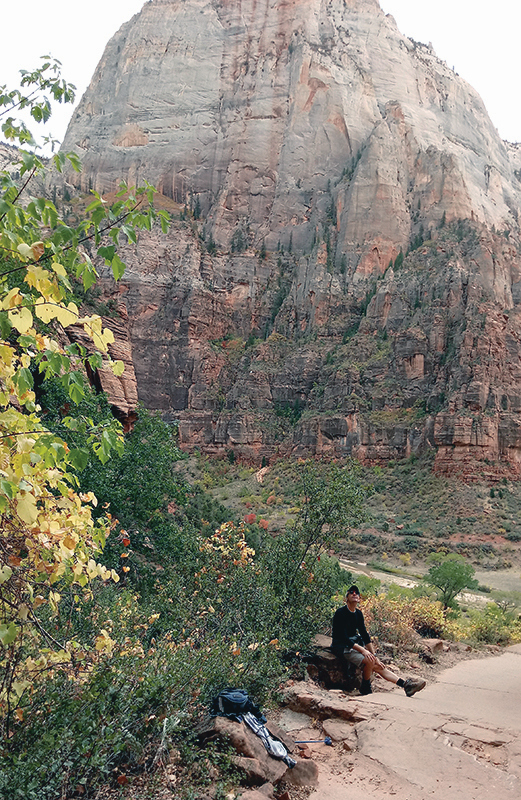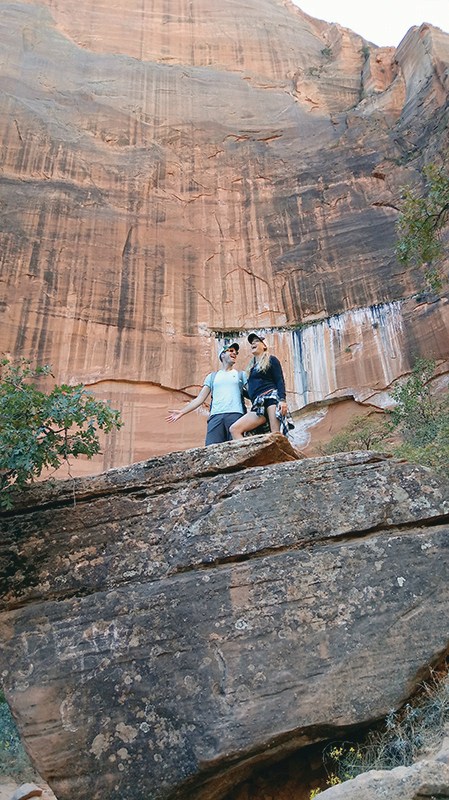Story and photos by Cheryl Hartz
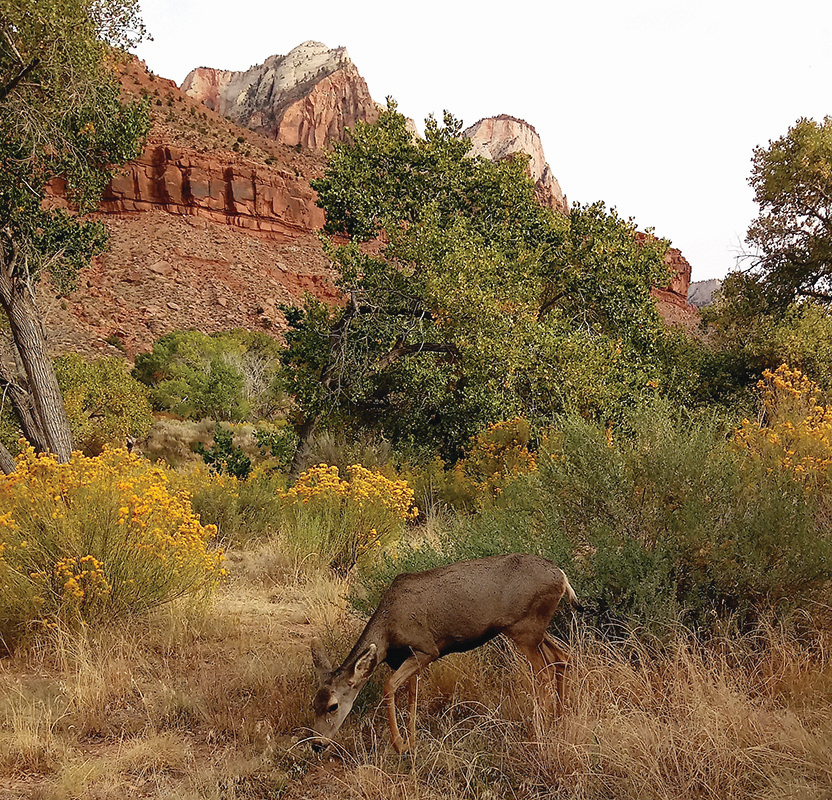
“All this is the music of waters.” So said explorer John Wesley Powell in 1895 of the Utah treasure we now know as Zion National Park. Rain, runoff from the Colorado Plateau’s “Grand Staircase,” and the Virgin River have created a wonderfully diverse landscape over the park’s 229 square miles.
Powell originally called the area Mukuntuweap, meaning “straight canyon,” for what he thought was the Paiute name for it. In July, 1909, President Taft proclaimed it the Mukuntuweap National Monument. Congress established it as Zion National Park 10 years later, in November, 1919, a year after it was renamed Zion National Monument. Zion, or “promised land,” was easier to pronounce and remember, officials believed.
Elevation change in the park is nearly a mile, allowing for widely varying terrain and ecosystems. Lowland desert, at 3,600-foot elevation, to forest highlands at 8,700 feet, with towering red rock cliffs and slot canyons in between, provide spectacular scenery – and hiking opportunities.
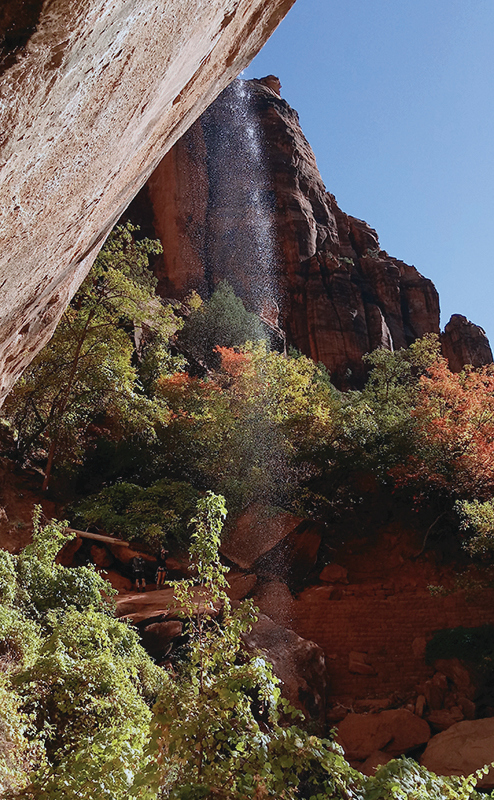
Some of those fairly easy opportunities, with less than 100 feet elevation change, include:
Pa’rus Trail: total 3.5 miles, paved and the only trail that allows pets on leash and bicycles. Pets can be in public roads, parking areas, campgrounds and picnic areas, however.
Grotto Trail: 1-mile, good for wildlife viewing.
Weeping Rock Trail: only 0.4 mile, but a steep, paved trail with minor drop-offs. With dripping springs and hanging gardens, this is the only place the rare Zion snail resides, among the maidenhair ferns and Colorado golden columbine.
Riverside Walk: a 2.2-mile paved trail along the Virgin River in a deep canyon with adjacent restrooms and water refill station.
Some moderate hikes include Lower and Middle Emerald Pools Trails: each 2.2 miles. Lovely pools, but no swimming!

Strenuous hikes, like the heart-stopping Angels Landing, I won’t go into here. It’s just dangerous, and now, after you get a permit, you have to wait in line for the opportunity to cross the narrow ridge to the summit.
The National Shuttle System, which opened in 2000, is the only way to these trails on the Zion Canyon Scenic Drive from March through November. No pets allowed on shuttles except ADA Service Animals.
A personal vehicle is allowed only when the shuttle doesn’t run. But it’s so convenient – no permits or reservations needed. You get on and off at will. We would love to see such a service at all busy National Parks.
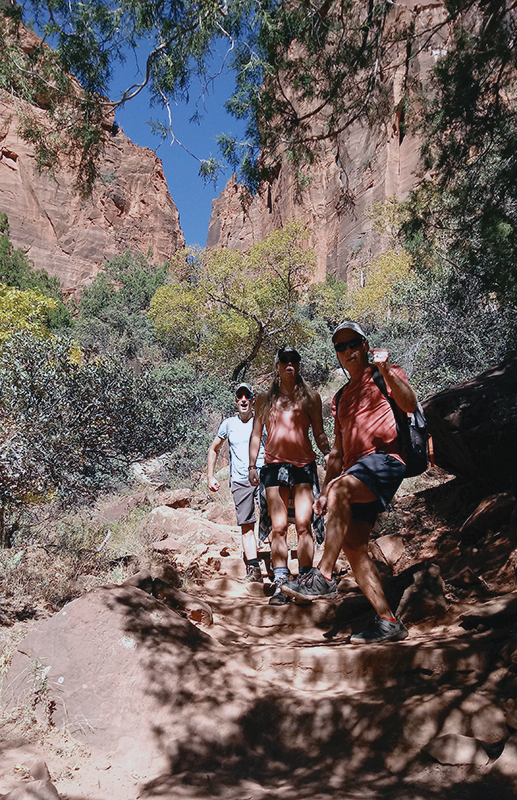
Our dogs got their own rural “resort” vacation this time, and we rented hotel rooms near the end of the shuttle stops in the Town of Springdale. The Springdale Line (town shuttle) quickly took us to the Zion Canyon Visitor Center, where we hopped on the Zion Canyon line (park shuttle).
Fauna ranges from lizard and desert tortoise to elk and mountain lion. Flora varies from cactus and mesquite to ponderosa pine and aspen.
Heaviest precipitation falls in March, with sparking wildflowers from April through June. Summers are HOT and extremely busy with tourists. Zion National Park gets nearly 5 million visitors annually, so try to get there when it isn’t peak season, as it is open 24-7 year-round. It’s worth the five-plus-hour trip from the Prescott area.
If you aren’t at least 62 and haven’t purchased a lifetime senior park pass, the first day of 2024 National Park Week is Saturday, April 20, with no entrance pass needed.
Happy diverse hiking!
